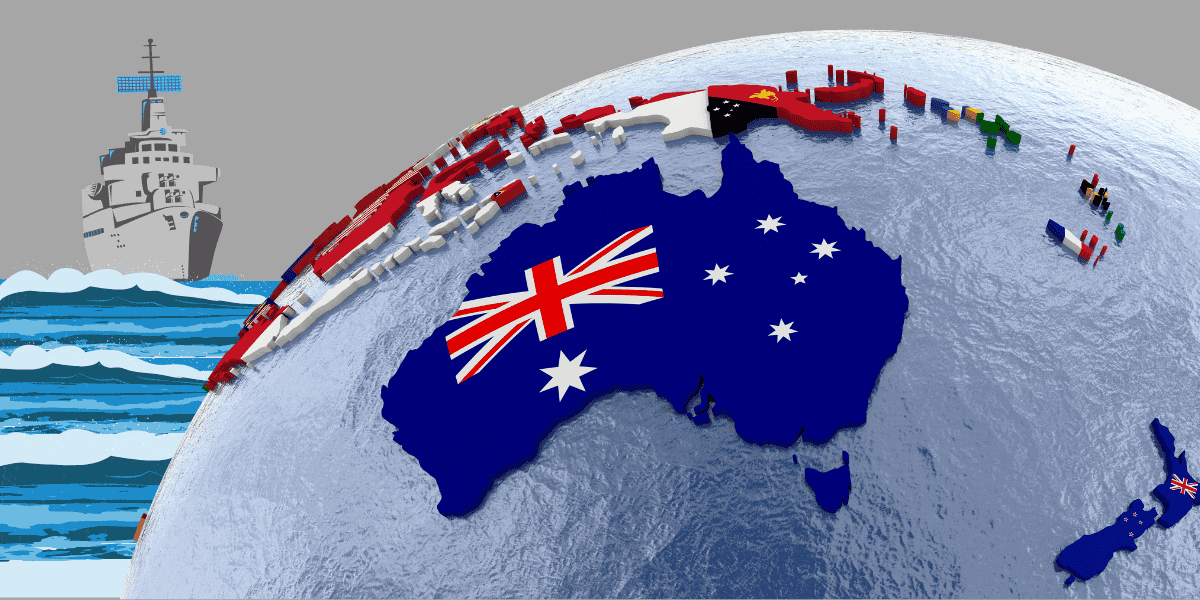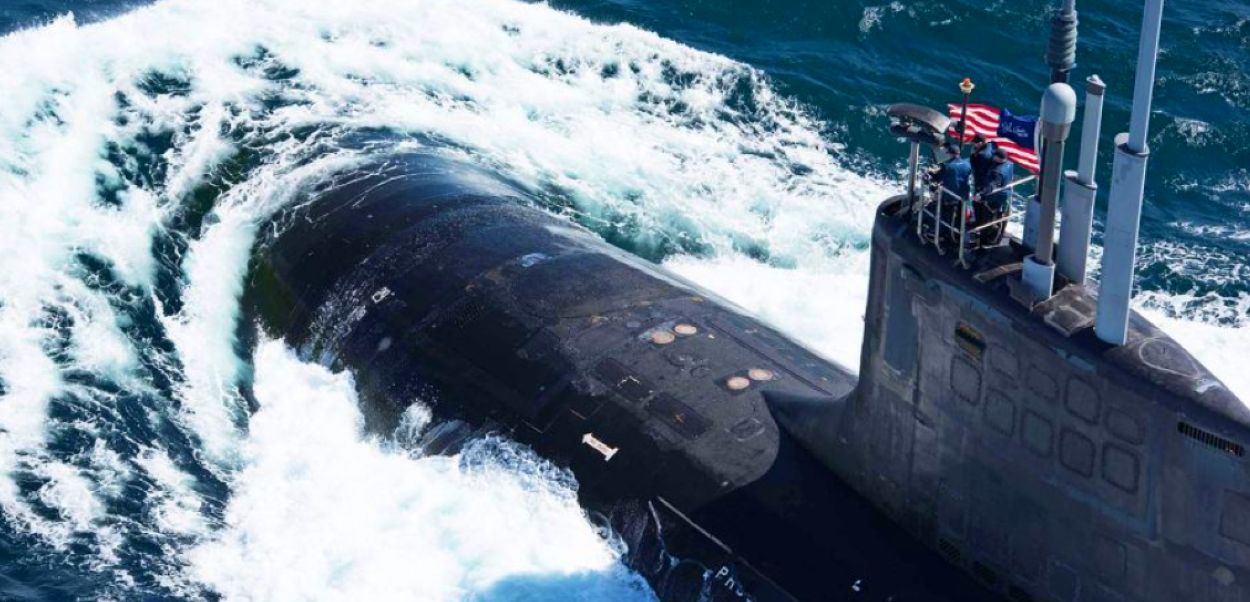By Rear Admiral Sanjay Roye (R), Indian Navy
Australia’s ambitious initiative to modernize the Royal Australian Navy (RAN) and double its fleet marks a pivotal shift in the nation’s defense strategy that aims to address evolving threats in the Indo-Pacific region and enhance maritime security.
However, the ambitious plan faces numerous obstacles that could hinder its successful implementation.
This article, a follow-up on the earlier article ‘Australia’s Naval Renaissance,’ explores the specific challenges Australia confronts in its warship and submarine building endeavors, including financial constraints, project management issues, industrial capacity limitations, personnel recruitment and retention difficulties, strategic timing concerns, and political pressures.
A deeper examination of these pain points is critical to understanding the complexities involved in transforming Australia’s naval capabilities.
Financial Challenges
A primary obstacle to Australia’s naval expansion is the substantial financial commitment required. The ‘Enhanced Lethality Surface Combat Fleet’ initiative requires an estimated AUD 54.2 billion (US$35.6 billion) in financing over the next decade. Securing such a large and sustained investment is challenging, particularly amidst economic fluctuations and competing budgetary priorities.
Although the Integrated Investment Program (IIP) dedicates 38% of defense investments to maritime capabilities, the sheer scale of expenditure may strain government budgets. Economic downturns or unexpected fiscal pressures could jeopardize funding continuity, potentially delaying or scaling back critical projects.
Australia’s naval projects have a history of cost overruns and budgetary mismanagement. The Collins-class submarines, Hobart-class destroyers, and Arafura offshore patrol vessels (OPVs) have all experienced significant cost escalations and delays.
These historical precedents raise concerns about the government’s ability to manage the current naval expansion’s financial aspects effectively. Ensuring fiscal discipline and implementing robust financial oversight mechanisms are essential to avoid repeating past mistakes.
Project Management Issues
Effective project management is crucial for the timely and cost-effective delivery of naval vessels. However, Australia has encountered persistent project management challenges in its defense procurement processes.
Based on BAE Systems’ Type 26 design, the Hunter-class frigates have already faced delays, with initial delivery dates pushed from 2027-2030 to no earlier than 2032. These delays increase costs and leave the RAN with an aging fleet for a more extended period, exacerbating capacity issues.

Historical projects like the Collins-class submarines and Hobart-class destroyers have suffered from various production challenges, including technical difficulties and supply chain disruptions. These issues highlight the need for improved project management practices, better risk assessment, and enhanced collaboration with international partners to ensure future projects remain on track.
Examples & Case Studies
- Collins-Class Submarines
The Collins-class submarines have long been a source of contention due to their high costs, extended development timelines, and performance issues. These submarines serve as a cautionary tale for Australia’s current submarine acquisition efforts, highlighting the importance of robust project management and realistic budgeting.
- Hobart-Class Destroyers
The Hobart-class destroyers have also experienced delays and cost overruns, with initial projections significantly exceeded. These challenges underscore the need for improved oversight and accountability in defense procurement processes to prevent similar issues in future projects.
- Arafura Offshore Patrol Vessels (OPVs)
The Arafura OPVs project has faced numerous delays and technical issues, further straining Australia’s defense budget and shipbuilding capacity. Lessons learned from this project emphasize the necessity of thorough planning, risk management, and stakeholder collaboration to successfully deliver naval assets.
Industrial Capacity And Workforce Limitations
Australia’s defense industrial base is another critical pain point. While capable, the country’s shipbuilding sector faces capacity and skilled labor limitations, which could hinder the ambitious naval expansion plans.
Australia’s shipbuilding workforce is relatively small, and expanding it to meet the demands of multiple large-scale projects simultaneously poses a significant challenge. The “Valley of Death” scenario, where fluctuating orders lead to a loss of skilled labor and industrial expertise, is a real threat. Maintaining a steady flow of shipbuilding projects is essential to preserve the workforce and industrial know-how.
Another concern is the capacity of Australian shipyards to handle the increased workload. Building 26 new warships and integrating advanced technologies requires substantial investment in infrastructure, machinery, and training programs. Without addressing these capacity constraints, the quality and timeliness of shipbuilding could be compromised.
Recruitment And Retention Of Personnel
Expanding the RAN’s fleet necessitates a corresponding increase in naval personnel. Recruiting, training, and retaining skilled personnel is a significant challenge, particularly given the rapid pace of technological advancements in modern warships and submarines.
Introducing Large Optionally Crewed Surface Vessels (LOSVs) and advanced submarines requires specialized skills in cyber warfare, advanced navigation, and weapons systems. Therefore, RAN must implement comprehensive recruitment and training programs to build a capable and resilient workforce.
Retention of experienced personnel is equally important. The competitive job market and the demanding nature of naval service can lead to high turnover rates, further exacerbating workforce shortages. Strategies to enhance job satisfaction, provide career development opportunities, and offer competitive compensation are essential to retain skilled naval personnel.
Challenges In Recruiting Young Australians & Immigrants
In addition to general recruitment and retention issues, Australia faces specific challenges in attracting young Australians and immigrants to join the RAN.
The declining interest among the young immigrant population and a lack of enthusiasm from other young Australians contribute to significant human resources (HR) shortages. Several factors contribute to this trend:
- Cultural and Social Factors: Immigrants may prioritize integration into civilian roles or face cultural barriers that make military service less appealing. Additionally, the perception of military service as a demanding and high-risk career can deter young individuals from seeking stable and less challenging employment opportunities.
- Economic Considerations: Young Australians, including immigrants, may opt for careers in academics or rapidly growing industries such as technology and finance, which often offer higher salaries and better work-life balance compared to military roles.
- Awareness and Outreach: Young immigrants and Australians need More effective recruitment campaigns. Lack of awareness about the benefits and career opportunities within the RAN can result in lower application rates from these demographics. At times, it is also felt that patriotic sentiment is on the wane.
- Educational Pathways: Limited pathways linking education and naval careers can also impede recruitment. Strengthening partnerships with educational institutions to create clear career trajectories and provide relevant training can help attract more young individuals to the RAN.
Addressing these recruitment challenges requires targeted strategies, such as tailored outreach programs, enhanced benefits packages, and initiatives to foster a more inclusive and appealing military environment for young Australians and immigrants.
Changing demographics raise the reasonable question of who will sign up for national service. In the future, these shortages may be filled by second-generation immigrants, but human resources remain a huge concern for now.
Strategic Timing And Threat Mitigation
The strategic timing of naval acquisitions is critical to ensuring that Australia can respond effectively to immediate and future threats. However, the current plan presents a temporal gap between the present security challenges and the full realization of the expanded fleet’s capabilities.
The Enhanced Lethality Surface Combat Fleet plan acknowledges a temporary reduction in the RAN’s warship capacity before the fleet grows. This interim period poses a risk, especially given the rapid advancements in regional naval capabilities, particularly those of China’s People’s Liberation Army Navy (PLAN). During this period, the RAN may be less capable of deterring potential aggressors and securing vital sea lanes.

The planned acquisition of Virginia-class nuclear-powered submarines and future SSN AUKUS variants will significantly enhance the RAN’s undersea warfare capabilities. However, these submarines are not expected to enter service until the early 2030s through the 2040s, leaving a considerable gap between current threats and future capabilities.
Bridging this gap requires interim measures, such as accelerated procurement of existing technologies and enhanced collaboration with allied navies for early warning and surveillance. Another short-term option may be to outright purchase second-hand vessels.
Political Pressures And Public Support
Maintaining political support and public confidence is vital for successfully implementing Australia’s naval expansion plans. However, political pressures and shifting public priorities can pose significant challenges.
Defense projects of this magnitude require long-term political commitment, often spanning multiple election cycles. Changes in government or shifts in policy priorities can disrupt the continuity of naval expansion plans, leading to delays or alterations in project scopes.
Public support for large defense expenditures can be volatile, particularly during economic downturns or periods of fiscal austerity. To maintain public support and justify the substantial financial investment, the government must effectively communicate the strategic necessity and long-term benefits of the naval expansion.
Recent news of a change of AUKUS submarine base and cancellation of missile system contracts is not encouraging and does not instill confidence in the resolve to secure the seas.
Integration With Submarine Acquisition Plans
Synchronizing warship and submarine acquisition timelines is essential to ensure a balanced and effective naval force. However, aligning these two significant procurement programs presents its own set of challenges.
The acquisition of conventionally armed, nuclear-powered submarines under the AUKUS treaty must be carefully coordinated with the warship procurement schedule. Misaligned timelines can lead to gaps in operational capabilities and hinder the RAN’s overall effectiveness.
Integrating advanced submarines with an expanded fleet of warships requires sophisticated technical and logistical planning. This includes ensuring interoperability between different classes of vessels, standardizing communication and combat systems, and developing comprehensive maintenance and support frameworks.
So, What Needs To Be Done?
In a nutshell, I will summarize them under four hard bullets.
- Addressing Historical Challenges
Australia’s history of naval procurement challenges highlights the need for systemic improvements in project management, financial oversight, and industrial collaboration. By learning from past experiences, the current administration can implement strategies to mitigate risks and enhance the likelihood of success for the Enhanced Lethality Surface Combat Fleet initiative.
- Improved Project Management Practices
Adopting more rigorous project management frameworks, including clear milestones, regular progress reviews, and contingency planning, can help address delays and cost overruns. Enhanced collaboration with international partners and leveraging global best practices can also improve project outcomes.
- Strengthening Industrial Partnerships
Fostering strong partnerships with international shipbuilders and technology providers can provide Australia with access to proven designs and advanced technologies, accelerating the delivery of warships and submarines. These partnerships can also facilitate knowledge transfer and capacity building within Australia’s defense industrial base.
- Investment In Workforce Development
Investing in workforce development and training programs is crucial to expanding Australia’s shipbuilding capacity and ensuring a skilled labor force. Initiatives such as apprenticeships, specialized training courses, and partnerships with educational institutions can help build a robust and capable workforce to support ongoing and future naval projects.
Conclusion
Australia’s ambitious naval expansion plan is a strategic imperative to address evolving regional threats and enhance maritime security.
However, the plan has numerous challenges, including financial constraints, project management issues, industrial capacity limitations, personnel recruitment and retention difficulties, strategic timing gaps, and political pressures.
Addressing these pain points requires resilient leadership, robust financial oversight, improved project management practices, strengthened industrial partnerships, and comprehensive workforce development strategies.
By learning from past procurement experiences and implementing systemic improvements, Australia can navigate these challenges and achieve its goal of modernizing and expanding the Royal Australian Navy.
Successful execution of the Enhanced Lethality Surface Combat Fleet initiative will bolster Australia’s maritime capabilities and ensure the nation remains a formidable force in the Indo-Pacific region, safeguarding its national interests and contributing to regional stability.
- Rear Admiral Sanjay Roye AVSM VSM (Retd.), Indian Navy, is a former Captain of the Akula-class SSN INS Chakra and Flag Officer Commanding Gujarat Naval Area. He is a keen follower of events in Asia Pacific and Oceania.
- He can be reached at sanjayroye (at) gmail.com




